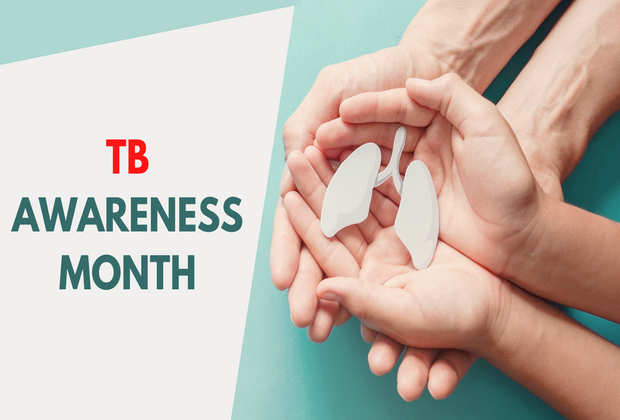South Africa ranks amongst the high-burden tuberculosis (TB), drug-resistant TB and HIV-co-infected TB countries, globally. However, over the past decade it has made significant progress in turning the tide by adopting the World Health Organization (WHO) recommended diagnostic technologies and therapies for both prevention and management to reduce the burden of the disease. In addition, the strengthening of HIV management has improved in parallel. These interventions have caused in a year-on-year decline in TB incidence, resulting in South Africa being one of six countries to achieve the End TB Strategy milestones for 2020, namely a 20% reduction in new TB cases (incident rate) between 2015 and 2020. Another success is that South Africa is one of 18 high-burden countries to achieve a greater than 80% coverage of testing for Rifampicin (a key drug for the treatment of drug susceptibly TB) resistance. While there have been great strides in reducing the number of TB cases, the burden remains high and efforts to further decrease the burden of disease need to continue to achieve the ultimate goal of Ending TB by 2035.
What can be done to change the country’s status quo as we recognise TB Awareness Month during March? The answer is threefold and involves integrated processes that rely on creating awareness of the disease, promoting health-seeking behavior; and rallying the support of communities and stakeholders behind TB prevention programs. All these are fundamental components to turning the tide on TB.
Before attempting intervention strategies, it is important to understand the disease. TB is caused by a bacterium (germ), namely Mycobacterium tuberculosis, which usually infects the lungs. However, TB bacteria can infect any part of the body, including the kidneys, spine and brain. The bacterium is airborne and lung TB, specifically, spreads when an individual infected with TB coughs, sneezes or talks. In order for infection to occur, a person has to inhale a few of these airborne bacteria. The bacteria then move to the lung causing infection. It is interesting to note that not all individuals infected with TB bacteria become sick, and for this reason two TB-related conditions exist, namely latent TB infection (LTBI) and active TB disease. With latent TB infection, the individual is not ill, and does not have any symptoms or signs of TB. In cases of active TB, the individual will feel ill and will display signs and symptoms of disease.
Symptoms of the disease include fatigue, persistent cough that can last for weeks, chest pains, coughing up sputum (phlegm from deep inside the lungs) which may be blood stained, fever and drenching night sweats. The presentation of TB symptoms in children, on the other hand, can be non-specific and, as a result may be overlooked, due to the overlap with other conditions, making diagnosis in children more challenging. Symptoms tend to vary between children and normally depends on a child’s age. The most common symptoms of active TB in younger children include fever, failure to gain weight, lethargy, swollen glands, chills and below average growth patterns.
Now that we have a better understanding of what TB is and what symptoms to look out for, it is important to know that TB is a treatable and curable disease. Individuals who present with any of the aforementioned symptoms should seek medical attention and consult a healthcare provider. TB testing is available at all health care facilities and at no cost in the public health sector. Delays in seeking care is generally the result of a mild presentation of TB symptoms, which means an infected individual may already be transmitting the bacteria to others. Therefore, knowing the risks a (undiagnosed) TB infected person carries for those around them, might be enough encouragement to seek a diagnosis and treatment early.
It is essential for those diagnosed with TB to take medication for the prescribed period, regardless if the symptoms improve or disappear. Non-adherence to treatment guidelines can lead to the development of drug-resistant, multi-drug resistant (MDR) and extensively drug-resistant (XDR) forms of tuberculosis, all of which resist standard TB treatment methods. For infants, young children and immunocompromised children who have been exposed to someone with infectious TB disease, a pediatric TB expert should be consulted. It is very important that children or anyone being treated for latent TB infection or TB disease complete the course of treatment exactly as instructed.
What can be done to prevent TB infection in the first place? An important part of TB prevention is for those with active TB infections to take precautions to protect others. This includes wearing a face mask when in close contact with other people in the initial days of treatment; staying home and taking treatment until the contagious period has passed (as advised by the clinician and on average about 2-4 weeks). Other preventative measures include covering your nose and mouth when sneezing and coughing, completing the entire course of prescribed medication without any treatment interruption, frequent handwashing, avoiding public places and public transport, and ensuring proper ventilation through open windows and the use of fans. Another effective way to prevent the spread of TB is for close contacts of a person with active TB to be screened by healthcare providers, as well as being conscious of symptoms and seeking medical care if any are experienced.
It is no secret that HIV and TB infection form a lethal combination. This is mainly due to untreated HIV-positive individuals being considered at higher risk of contracting TB due to weakened immune systems. According to TBFacts.org, 360 000 individuals fell ill with TB in 2019 in South Africa, of which 58 000 died. Of these mortalities, 36 000 patients were reportedly infective with HIV. For this reason guidelines have been implemented by the National Department of Health, which gives every HIV-positive person in South Africa access to TB prevention therapy.
Regrettably, the COVID-19 pandemic has reversed years of progress in providing TB services and in reducing the TB disease burden globally. WHO have noted the most obvious impact in a large drop in the number people newly diagnosed with TB. In 2020, the number of TB associated deaths had increased back to levels experienced in 2017, as a result of reduced access to TB diagnosis and treatment. WHO recommends, as an immediate priority, to urgently restore access and provision of essential TB services in an effort to mitigate and reverse the impact of the COVID-19 pandemic.
In conclusion, the primary purpose of TB Awareness Month, and TB Awareness Day on 24 March is to inform and educate communities about the impact of TB. According to the WHO, effective partnerships between health services and the community, that involve carefully designed initiatives, will enable communities to become increasingly knowledgeable and self-reliant. This is the epitome of community education initiatives that may ultimately bring about change in health-seeking behaviour. The only way to beat TB is to do it together.
To find out more about TB, click here.





